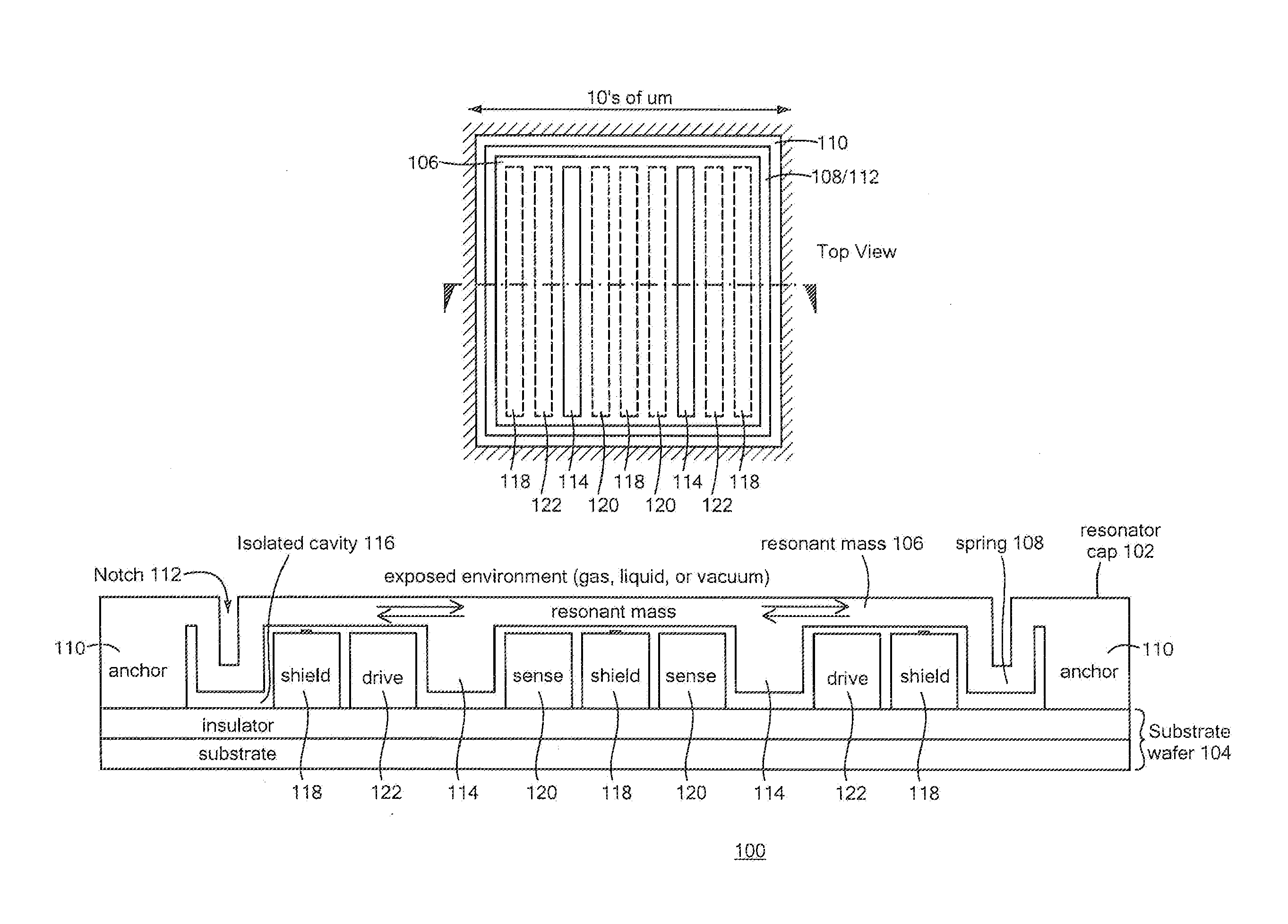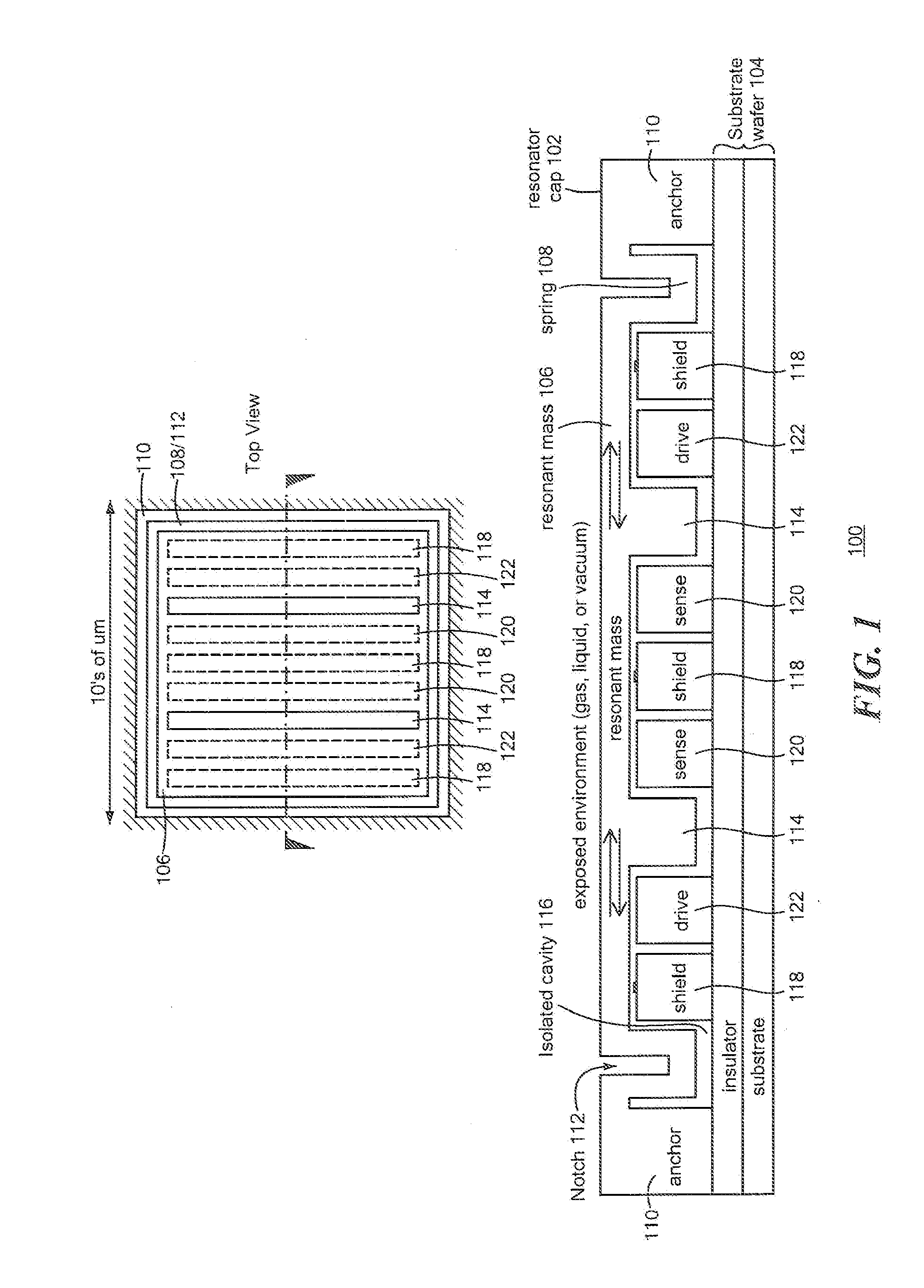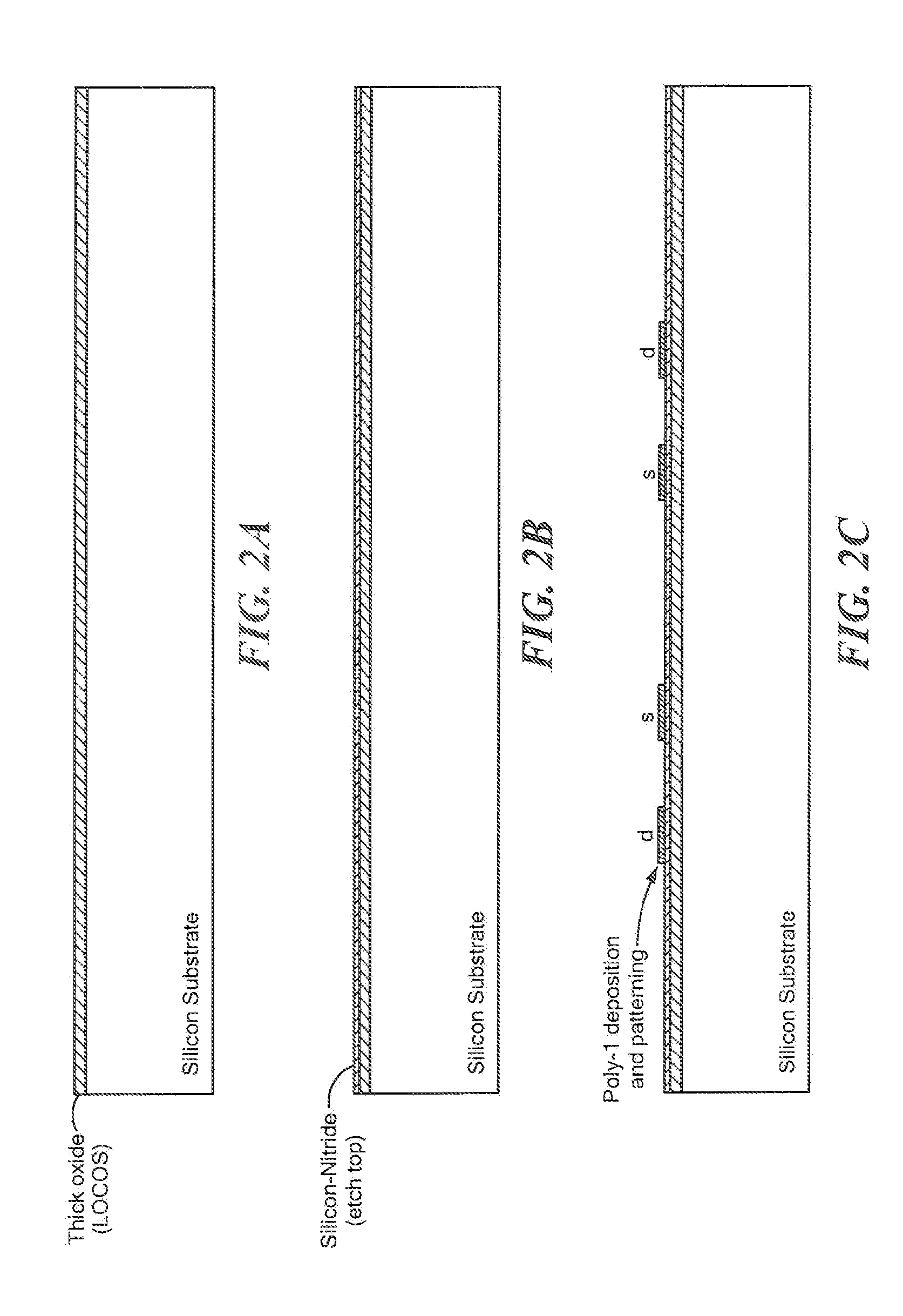MEMS In-Plane Resonators
a resonator and in-plane technology, applied in the field of resonators in-planes, can solve the problems of reducing the q reducing the efficiency and reducing the performance of the resonant sensor exposed to a non-vacuum environment, so as to achieve the effect of reducing the damping performan
- Summary
- Abstract
- Description
- Claims
- Application Information
AI Technical Summary
Benefits of technology
Problems solved by technology
Method used
Image
Examples
Embodiment Construction
[0060]Definitions. As used in this description and the accompanying claims, the following terms shall have the meanings indicated, unless the context otherwise requires:
[0061]A “set” includes one or more members.
[0062]The term “in-plane” should be understood to mean predominately in the plane of the resonator wafer and / or sensing surface. Typically, a small amount of out-of-plane motion will be present, for example, due to the Poisson effect, fabrication variations, etc., and generally can be tolerated.
[0063]The “mode” of a resonating body is the shape of motion of the body at resonance.
[0064]An “electrode” is a structure through which an electrical or electromechanical effect is applied and / or sensed. In exemplary embodiments, various electrodes are used for applying and / or sensing electrical or electromechanical effects through capacitive coupling (e.g., between a resonant mass and one or more adjacent structures), although it should be noted that other types of electrodes and cou...
PUM
 Login to View More
Login to View More Abstract
Description
Claims
Application Information
 Login to View More
Login to View More - R&D
- Intellectual Property
- Life Sciences
- Materials
- Tech Scout
- Unparalleled Data Quality
- Higher Quality Content
- 60% Fewer Hallucinations
Browse by: Latest US Patents, China's latest patents, Technical Efficacy Thesaurus, Application Domain, Technology Topic, Popular Technical Reports.
© 2025 PatSnap. All rights reserved.Legal|Privacy policy|Modern Slavery Act Transparency Statement|Sitemap|About US| Contact US: help@patsnap.com



